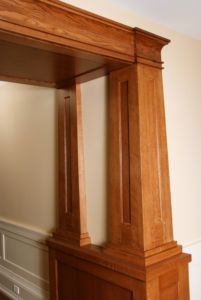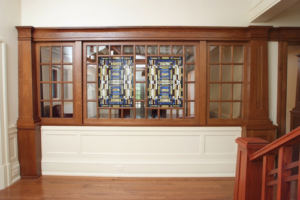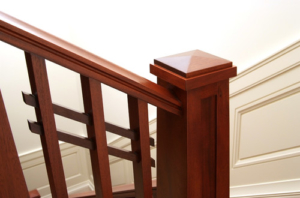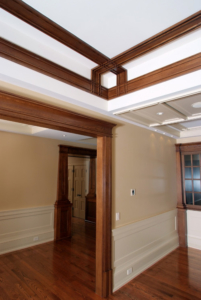Hardwood Takes Center Stage in Craftsman-Style Home
“The popularity of Craftsman architecture, both old and new, lies in the fact that it looks like home.”
~ Robert Winter, architectural historian
None other than Frank Lloyd Wright introduced Craftsman design in the latter years of the 19th century. Craftsman — an integral part of the American Arts and Crafts movement that incorporates elements of Mission and Shaker-style décor — was a revolt against the fussy design style of the Victorian era. This distinctively American style is synonymous with gorgeous hardwood, craftsmanship, clean lines and simple silhouettes.
“More than any other material, fine hardwood defines the Craftsman-style,” Baird Brothers’ Steve Stack said. “The straight lines that are the hallmark of this style show off the character and natural beauty of the hardwood as well as top-notch craftsmanship.”
Using stunning images from a home beautifully trimmed with Baird Brothers hardwood moldings, Steve discusses some of the features of Craftsman design.
Hardwood Doors Hinge on Simplicity
“Craftsman-style doors feature a flat panel, rather than a colonial or provincial raised panel, with a square sticking versus a moulded sticking,” Steve said. Truly showcasing the natural beauty of the hardwood, this custom three-panel quarter-sawn white oak interior double door has Craftsman-style painted door casing and custom base blocks.

Columns Support the Interior Design
“In the open floor designs that define a Craftsman-style home, tapered columns are essential design features,” Steve said. The architectural detail of these beautiful custom quarter-sawn white oak interior columns provides interest in this transitional hallway.

Elevating Your Hardwood Stairs
The combination of the custom Craftsman mahogany handrail, square balusters and walnut horizontal slats with pyramid cap newel posts makes this stairway an eye-catching centerpiece in this Craftsman-style home.
Keep the Moulding Straight
“In Craftsman-style homes, you’ll find very straight-lined mouldings, with limited profiles,” Steve said. With a simple geometric design, this custom quarter-sawn white oak ceiling moulding draws the eye upward and adds a decorative element to the room.
Hardwood and Stained Glass Brought Together
“Hardwood is often used as the base in Craftsman-style to incorporate other natural materials such as stone, tile and glass,” Steve said. This show-stopper features two panels of custom Art Deco stained glass which diffuses natural light and enhances the architectural appeal of the quarter-sawn white oak true-divided light, three-sash interior window unit that sits on top of a painted poplar flat panel half wall.






